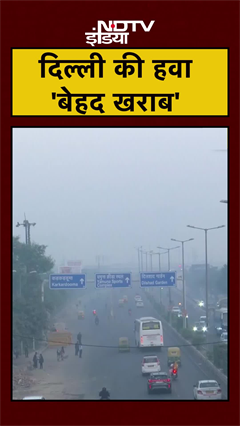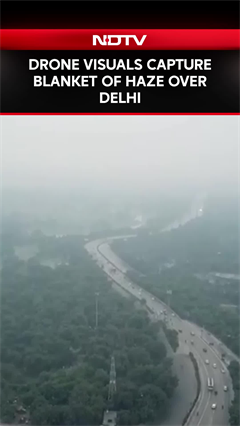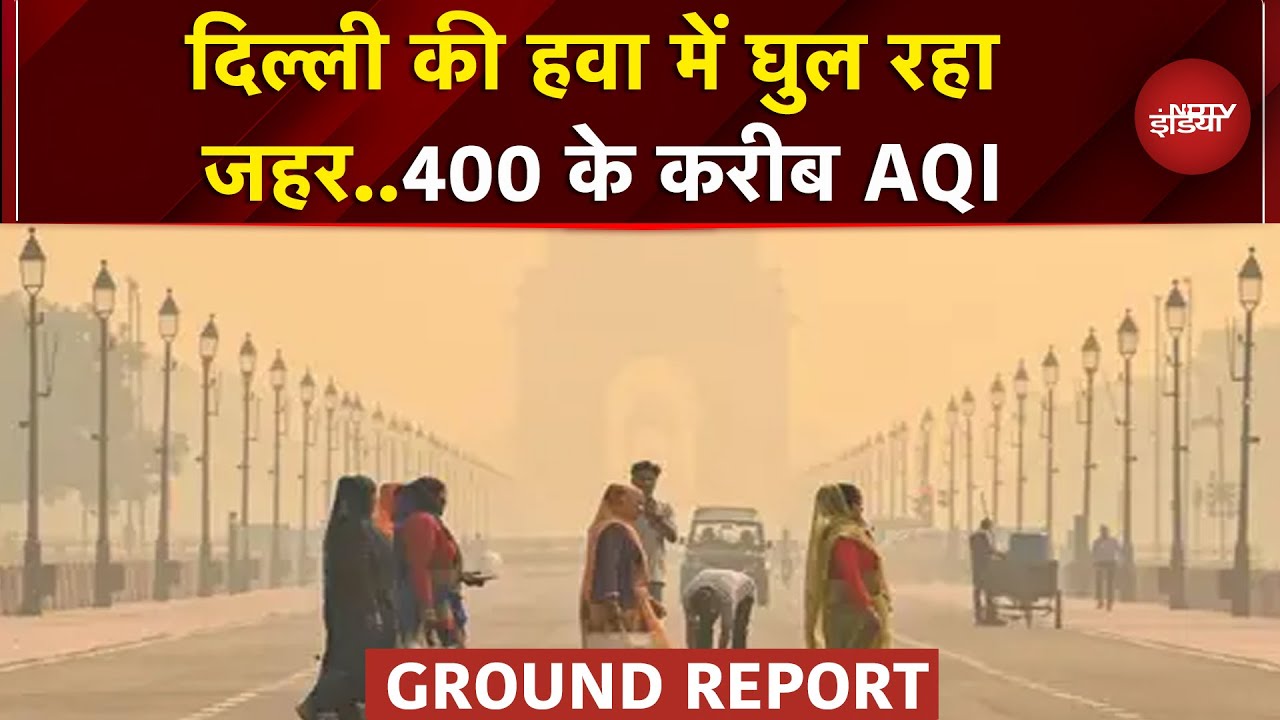- Home/
- Air Pollution May Risk Chances Of Live Birth From IVF: Study
Air Pollution May Risk Chances Of Live Birth From IVF: Study

Air pollution could lower the chances of a live birth from in vitro fertilisation (IVF) by nearly 40 per cent even in areas with "excellent" air quality, a study has found.
IVF involves fertilising a mature egg with a sperm in a lab to form an embryo, which is then placed in a uterus to develop into a baby.
In this study, over an eight-year period, researchers analysed close to 3,660 frozen embryo transfers (an IVF procedure) from 1,836 patients in Perth, Australia. During the transfer process, frozen embryos are thawed and placed in a woman's uterus.
The researchers, including those from the Perth Children's Hospital, looked at air pollutant levels over four lengths of duration - 24 hours, two weeks, four weeks, and three months - prior to oocyte retrieval, which is when eggs are taken from the women's ovaries before being fertilised with a sperm.
A higher exposure to fine particulate matter (PM10) in the two weeks leading up to oocyte collection was found to cut down the successful birth rate of an IVF by 38 per cent.
Increasing exposure to PM2.5 in the three months prior to oocyte collection was also related to lowered chances of live birth, the researchers found. The findings were presented at the 40th Annual Meeting of the European Society of Human Reproduction and Embryology (ESHRE) in Amsterdam.
"Our results reveal a negative linear association between particulate matter exposure during the two weeks and three months prior to oocyte collection and subsequent live birth rates from those oocytes," said lead author Sebastian Leathersich, a specialist obstetrician and gynaecologist, Perth Children's Hospital.
The negative impacts of air pollution were observed despite excellent air quality prevailing during the study period, with PM10 and PM2.5 levels exceeding the World Health Organization's guidelines on only 0.4 per cent and 4.5 per cent of the study days, respectively, the researchers stressed.
"This association is independent of the air quality at the time of frozen embryo transfer. These findings suggest that pollution negatively affects the quality of the eggs, not just the early stages of pregnancy, which is a distinction that has not been previously reported," said Leathersich.
Human reproduction is not immune to pollution and climate change, the greatest threats to human health, said Leathersich.
"Even in a part of the world with exceptional air quality, where very few days exceed the internationally accepted upper limits for pollution, there is a strong negative correlation between the amount of air pollution and the live birth rate in frozen embryo transfer cycles. Minimising pollutant exposure must be a key public health priority," said Leathersich.
The study appears as an abstract in the journal Human Reproduction.
(This story has not been edited by NDTV staff and is auto-generated from a syndicated feed.)
also read
Latest Stories
- Reported by Ishika Verma | Friday November 07, 2025 , New Delhi
As Delhi's air quality dips with the onset of winter, the city government is introducing staggered office timings for its departments and municipal offices in an effort to ease traffic congestion and reduce vehicular emissions.
- Press Trust of India | Thursday November 06, 2025 , New Delhi
A public interest litigation (PIL) has been filed before the Supreme Court seeking urgent judicial intervention in the "nationwide public health emergency" caused by escalating air pollution across India.
- Edited by Abhinav Singh | Thursday November 06, 2025
A Reddit user built the air purifier at home, which costs only Rs 2,000 and reduces AQI from 400 to 50 in 15 minutes in a small room.
- Written by Shreya Goswami | Thursday November 06, 2025
Air pollution and rising temperatures may be silently affecting male fertility.
- Edited by Abhinav Singh | Thursday November 06, 2025
A video going viral on social media has shown the extent of the pollution crisis, where Delhi's skyline is barely visible from an airplane window.
................................ Advertisement ................................
Latest Videos
Opinion
Opinion | Why Indians Have Just Given Up On Air Pollution CrisisTanushree Ganguly
Friday December 20, 2024While some may argue that people in Delhi are now more aware of air pollution than they were a decade back, my rebuttal would be that awareness does not mean that people are concerned.
Opinion | You Must Outrage Over Filthy Air More Than Once A YearJyoti Pande Lavakare
Tuesday December 10, 2024Delhi welcomed us with monsoon rains and mangos. We were home. Fast forward a couple of years, in the winter of 2012, I found myself in denial about something other parents, mostly expats, were calling toxic air.
Opinion | Delhi's Air Pollution Situation Is Like A Bad MarriageNishtha Gautam
Friday November 22, 2024On a good day, such as today, the AQI reading in Delhi is 407. We are jubilant at the sickly sunshine trickling through the slightly dissipated smog. At least its not 1600.
दिवाली... पराली... सियासी जुगाली!Ashwini kumar
Monday November 18, 2024दिल्ली-एनसीआर में प्रदूषण का समाधान तो आज तक मिला नहीं. हर साल चिंतित होकर हम-आप सांसों की तकलीफ के साथ-साथ दिल और ब्लड प्रेशर के मरीज भी क्यों बनें?
घर में कैद बुजुर्ग और हांफते लोग, दिल्ली की सांसों में घुला ये कैसा रोग?Nidhi Kulpati
Friday November 08, 2024हमारी हवा जहरीली हो रही है. गुरुवार की शाम को जब मैं इस मुद्दे पर लिखने बैठी तो AQI लगातार 400 पार जाकर दम घोंट रहा था. बहुत लोगों को यह मामला बोरिंग लगे, लेकिन जब आप अपने साथ काम करने वालों को खांसते-हांफते देखते-सुनते हैं, तो चिंता होने लगती है. सुबह उठते ही दरवाजे खिड़कियां खोलने के लिए डॉक्टर मना कर रहे हैं. बड़े बुजुर्गों के लिए तो मॉर्निंग वॉक बाहर की दुनिया से सीधे संपर्क का ज़रिया है, लेकिन डॉक्टर इसकी भी मनाही कर रहे हैं.


















